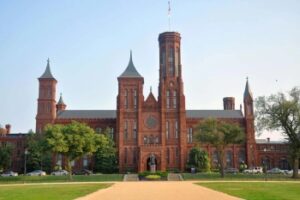 Interesting Facts – Born in France and raised in England, chemist James Smithson (1765–1829) was well traveled, spending significant chapters of his life in Switzerland, Germany, and Italy.
Interesting Facts – Born in France and raised in England, chemist James Smithson (1765–1829) was well traveled, spending significant chapters of his life in Switzerland, Germany, and Italy.
According to his will, he also gave much thought to transatlantic affairs in America, a destination that eluded him during his lifetime. He inherited a substantial sum from his mother (although not from his father, the Duke of Northumberland, because he’d been born out of wedlock), which he invested in emerging technologies such as canals and steam engines.
Smithson never married or had children of his own, and when he died, his will bequeathed his riches to his nephew, Henry James Hungerford — with an unusual clause. If Hungerford died without legitimate or illegitimate heirs, Smithson’s estate would be set aside for the United States “to found at Washington, under the name of the Smithsonian Institution, an establishment for the increase and diffusion of knowledge among men.”
Hungerford outlived his uncle by only six years, and died without having children.
Hypotheses abound concerning Smithson’s motives: Perhaps he wanted to denounce classist England, advocate for democracy, or simply create more charitable organizations grounded in a shared love of learning and science. After congressional debate about whether the then-hypothetical Smithsonian would impinge states’ rights (among other concerns), in 1846 the Senate passed an act establishing what would become the world’s largest museum and research complex, which President James K. Polk duly signed into law.
Today, the vast majority of the Smithsonian’s museums — such as the National Museum of Natural History and the National Museum of American History — are still located in the nation’s capital, and admission to these facilities is free.
SF Source Interesting Facts May 2024
